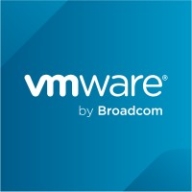


VMware VeloCloud SD-WAN and Check Point Harmony SASE are leading network management solutions. Users favor VMware VeloCloud for integration and reliability, while Check Point Harmony is preferred for its superior security features.
Features: VMware VeloCloud SD-WAN offers seamless integration, robust connectivity, and efficient network management. Check Point Harmony SASE provides comprehensive security with zero-trust network access, secure web gateways, and advanced threat prevention.
Room for Improvement: VMware VeloCloud users suggest enhancements in scalability, reporting, and advanced analytics. Check Point Harmony SASE users find the initial setup complex and recommend a smoother learning curve with improved user interface options.
Ease of Deployment and Customer Service: VMware VeloCloud SD-WAN is known for its simple deployment and responsive support. Check Point Harmony SASE, although facing initial learning challenges, benefits from knowledgeable and supportive customer service.
Pricing and ROI: VMware VeloCloud SD-WAN users find competitive pricing with quick ROI due to minimized downtime. Check Point Harmony SASE is perceived as a worthwhile investment despite higher costs, owing to extensive security features and potential long-term savings.
| Product | Market Share (%) |
|---|---|
| Check Point Harmony SASE (formerly Perimeter 81) | 3.9% |
| iboss | 2.1% |
| VMware VeloCloud SD-WAN | 3.1% |
| Other | 90.9% |



| Company Size | Count |
|---|---|
| Small Business | 6 |
| Midsize Enterprise | 6 |
| Large Enterprise | 5 |
| Company Size | Count |
|---|---|
| Small Business | 52 |
| Midsize Enterprise | 18 |
| Large Enterprise | 15 |
| Company Size | Count |
|---|---|
| Small Business | 23 |
| Midsize Enterprise | 14 |
| Large Enterprise | 20 |
Iboss offers a comprehensive cloud-based security platform valued for its scalability and autonomous features, ensuring robust security with easy deployment and management capabilities.
Renowned for its robust security architecture, Iboss integrates seamlessly within diverse networks, delivering efficient granular filtering and advanced content categorization. Its single pane of glass console provides ease of management, allowing rapid scalability suitable for rapidly deploying environments. Operates in BYOD setups due to inline filtering without device installation. Integration with cloud-based applications enhances user control, and features like SASE, SSL inspection, and ChatGPT risk protection stand as highlights. Despite its strengths, users have pointed out areas for enhancement like direct navigation in reports, SSL decryption, and better cloud integration while having room to improve data loss prevention.
What are the most important features of Iboss?The usage of Iboss spans educational institutions, specifically K-12, to enforce internet policies, protect data, and support remote work environments. It provides web filtering and security frameworks to ensure safe browsing. Its platform-as-a-service model offers flexibility for both cloud-based and on-premises requirements, integrating seamlessly to deliver enhanced security features suitable for various deployment needs including zero trust, CASB, and network security for work-from-home setups.
Check Point Harmony SASE, formerly Perimeter 81, offers robust security features like split tunneling, MFA, and Zero Trust Network Access focused on secure remote access and optimized connectivity for remote teams.
Check Point Harmony SASE delivers advanced security through a user-friendly interface, efficient VPN connections, and a centralized management console. It enhances security with real-time threat intelligence from ThreatCloud and traffic management via built-in optimization. Firewall as a Service and Secure Web Gateway safeguard against unauthorized access and phishing. While users seek enhanced networking customizations and better integration with identity providers, there's an emphasis on improving reporting, real-time analytics, and policy management. Requests also include a Chrome extension, traffic balancing, and simplified configuration to address some resource-intensive aspects.
What are the key features of Check Point Harmony SASE?
How can organizations benefit from using Check Point Harmony SASE?
Check Point Harmony SASE is used across industries for secure remote access and connectivity, protecting sensitive data, and managing access to corporate resources. It is ideal for those with hybrid cloud models and requires comprehensive security measures combined with existing IT infrastructures to meet specific industry demands.
VMware Software-Defined Wide Area Network (SD-WAN) is a secure access service edge (SASE) platform that combines many types of software-based network technologies in an attempt to enable users to virtualize their wide area networks and reduce their reliance on hardware. In essence, this solution makes it possible for users to reliably access their applications from anywhere in the world by leveraging cloud technologies. Users can simply, efficiently, and completely control their network devices and traffic. It ensures that organizations are always able to use the best possible connection to their data centers. VMware SD-WAN steers traffic so that it is always using the most reliable connections and at the same time takes steps to remediate any problems that it detects in other network links. This guarantees that organizations can access high-priority applications at all times.
VMware SD-WAN Benefits
Some of the ways that organizations can benefit by deploying VMware SD-WAN include:
VMware SD-WAN Features
Reviews from Real Users
VMware SD-WAN is a solution that stands out when compared to many of its competitors. Two major advantages it offers are its ability to automate the process of creating and maintaining a virtual local area network and its intuitive user dashboard.
Sami I., principal cloud architect at Loihe, writes, “One of the solution's most valuable features is the VMware core automation stack at an SDDC. It includes NSX, the VMware virtualization layer for the networks (the LAN virtualization), which works extremely well with the VMware SD-WAN solution and is the primary advantage over all the others. None of the other vendors could integrate with the virtual LAN, making it quite complicated and virtualized to be fully automated.”
Chih S., senior technical consultant at a tech services company, says, “The product has a very good user dashboard that is simple to navigate.”
We monitor all Secure Access Service Edge (SASE) reviews to prevent fraudulent reviews and keep review quality high. We do not post reviews by company employees or direct competitors. We validate each review for authenticity via cross-reference with LinkedIn, and personal follow-up with the reviewer when necessary.